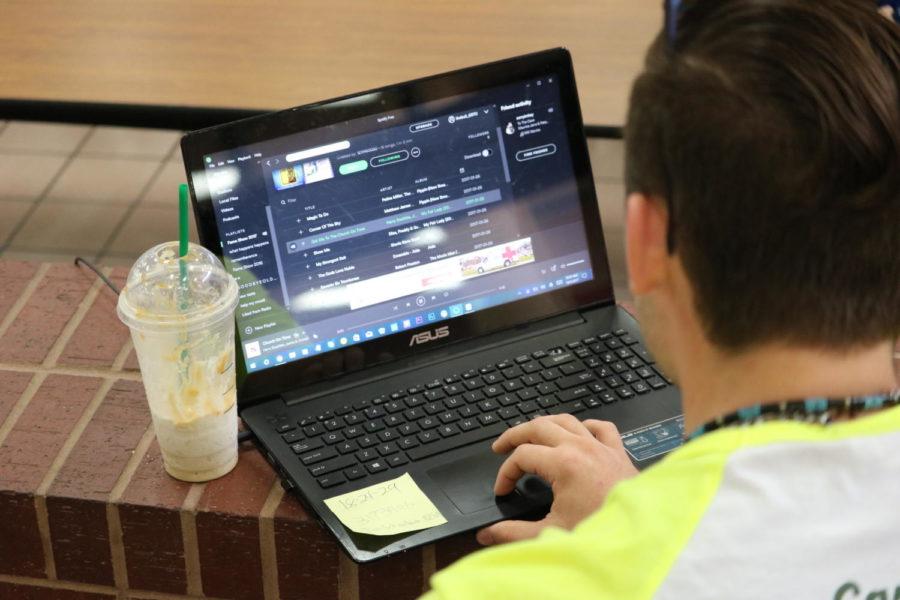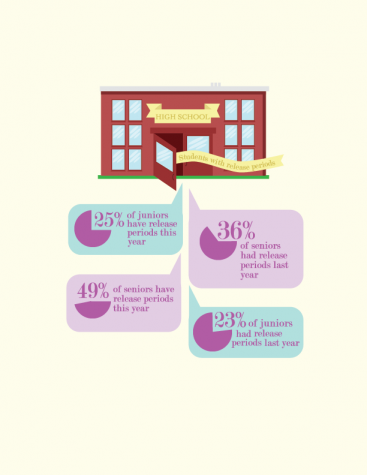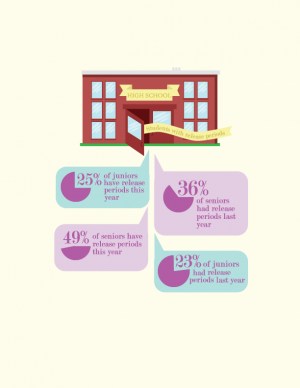Working hard or hardly working? The various ways students use release periods
Coppell High School junior William Leslie spends his morning release period listening to showtunes on his laptop. This year, Coppell High School sophomores, juniors and seniors have the option of a release period in their schedule.
October 13, 2017
Coppell High School offers release periods to sophomores, juniors and seniors. During these 50 or 90 minute periods, students can either leave campus or stay on campus and use the time as a free period. There are both pros and cons to this system of using release periods.
Pros
Improved Performance in School
Many students’ grades drop as their amount of sleep decreases and as they start focusing more on extracurriculars. Periods providing free time for students are beneficial because they provide extra time for students to complete homework and study for tests without sacrificing sleep or time spent in extracurriculars.
According to the University of Notre Dame, “71 percent of students agree that study halls improved their performance in school.”
Helps student athletes
State law states athletes are not permitted to participate in sports unless they are passing every class. In many difficult classes, it may be a challenge to maintain the standard needed to be eligible even if the students works hard and keep up with their homework. Because of this adversity, many students struggle with ineligibility. The release period gives students the ability to take fewer classes, and focus on passing the ones they are taking.
Provides a mental break
Many students are exhausted throughout the day, and are unable to focus in class because of this. If they are not focusing in class, they are not absorbing nearly as much information as they could.
“[Release periods] provide a break… for [students with] more demanding schedules,” CHS Honors and IB Chemistry teacher Susan Sheppard said.
Many students overload on AP classes, academic clubs and jobs, and sometimes all they need is a little time for themselves.
Cons
Students take fewer classes
Many students take one or two release periods a year, which leads to less classes being taken. This may hurt students in the college application process because of the reduced rigor of their schedule. Some may not even meet the required courses they have to take to apply to college or graduate high school.
“Younger students with release periods run the risk of running out of time to repeat failed classes which are required for graduation,” Sheppard said.
This year, sophomores are also allowed release periods, and this may end up being an issue with college admissions offices. Often, colleges and universities are looking for students who took advantage of course opportunities on their high school campus.
Students roam campus grounds
Some students leave campus for their release periods.
“Many kids don’t have transportation or don’t live close enough to walk to and from school,” Sheppard says.
The students in the latter category end up staying on campus until their bus comes, which may bring up issues for the district.
“How much responsibility does the district bear for … students who are on campus but not in class?” Sheppard said.
Follow Pramika on Twitter: @pramika_kadari













